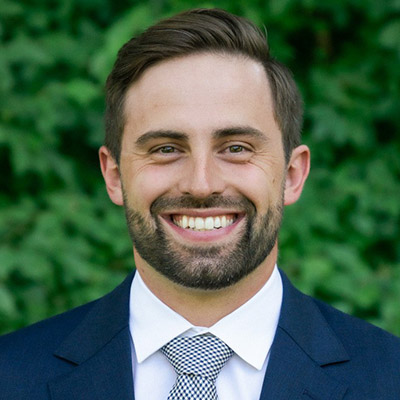Presenter Profile

Colin Eaton, BS
eatonc@ohsu.edu
Colin is a fourth-year medical student at Oregon Health and Science University in Portland, Oregon. He began swimming competitively at the age of nine and continued throughout his undergraduate education. During this time he witnessed the importance of water safety in our community’s youth population, even taking part in several water rescue events set in one of many of Oregon's natural bodies of water. While in medical school, he was fortunate enough to connect with pediatrician Dr. Ben Hoffman, a statewide leader in child safety and injury prevention. With the help of Dr. Hoffman and other student peers, Colin and the team sought out ways to help prevent future drowning events in Oregon’s youth.
Presentations
Using Media Reports to Describe the Epidemiology of Unintentional Child Drownings in Oregon
Colin Eaton, BS
Brittny Flynn, BS
Jasmine Curry, MD
Ben Hoffman, MD
Unintentional injuries remain the leading cause of death for children aged 1-18 years old, and drowning remains a major cause of preventable mortality. Data from the CDC demonstrates that Oregon children die from drowning at a higher rate than the national average, and significantly more than children and youth in the neighboring states of Washington (42% higher rate) and California (72% higher rate). Objective existing data sources lack the epidemiologic and demographic information necessary to inform drowning prevention efforts. We utilized media reports of child drowning events to provide that critical information.
We identified all drowning deaths for children and youth 0-17 years of age from the Oregon Bureau of Vital Statistics for the years 2006-2020. We then performed internet searches, using publicly available media reports, obituaries, and other items regarding each death to categorize each death by age, location, and type of water.
There were 171 unintentional pediatric drowning victims identified during the period examined. 134 (78%) had publicly available information that allowed us to characterize epidemiologic factors. Most pediatric drowning deaths occurred in natural water on public lands (61%overall, 85% for ages 4-17). Males drowned at a higher rate than females, approximately 3:1. The highest overall drowning rates occurred in children aged 0-4 years old, consistent with national trends. While most occurred on private property, almost half were associated with natural water and not swimming pools. Children of color drown at almost twice the rate of non-Hispanic white children (RR 1.927) in natural water on public lands. Between 6% and 20% of drownings may have been prevented with PFD use.
We employed media and other publicly available resources to identify key demographic and epidemiologic factors associated with drowning for children ages 0-17 in Oregon. Natural water, on both private and public land, poses the greatest risk, and children of color bear a higher burden of drowning mortality. Efforts to prevent drowning in Oregon must focus on ensuring access to multiple layers of protection, including water competence training and PFD use, and must incorporate community-based approaches to addressing equity and disparity. These findings will be used to inform community and policy initiatives to decrease drowning rates. Further research and epidemiologic tools should be used to help identify and address the disparities among drownings in children of color and other minority groups.
1. Oregon children suffer from higher rates of drowning as compared to neighboring states, particularly children of color are at disproportionately increased risk.
2. The majority of drownings occur in natural water on public lands, part of which could have been prevented with the use of a personal flotation device.
3. This data should be used to guide future policy initiatives to ensure the safety of children engaging in water activities.
